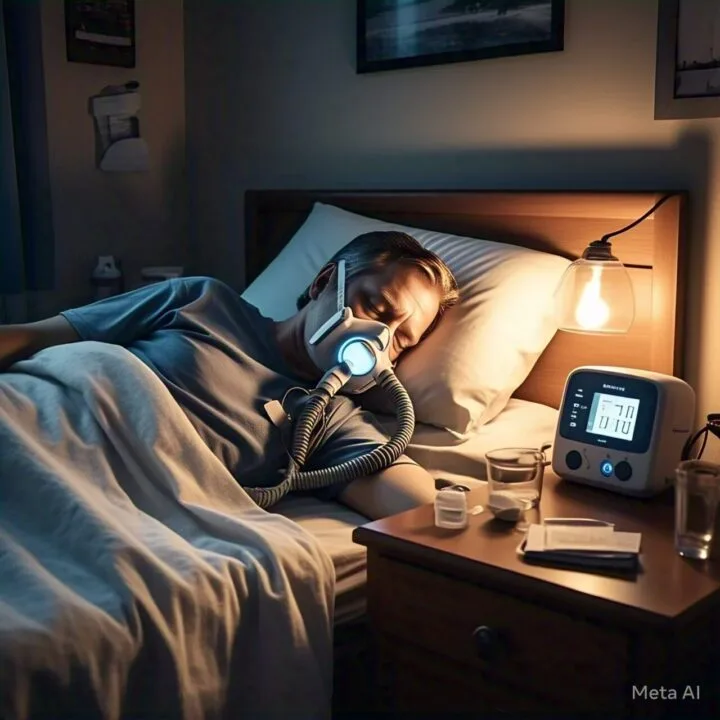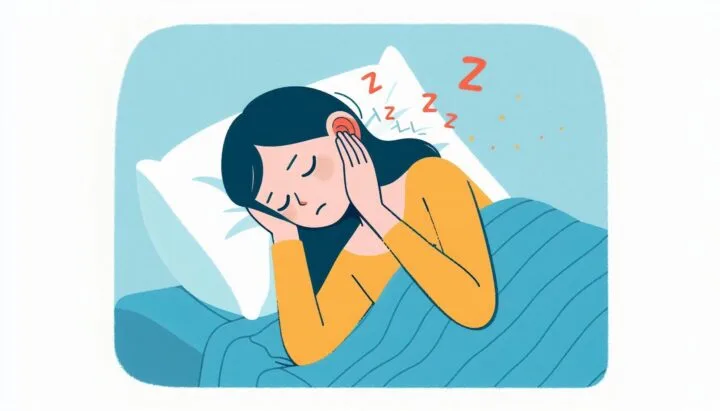Mouth Splints for Sleep Apnea: A Comprehensive Guide
Table of Contents

Are you tired of struggling with sleep apnea and looking for an alternative to CPAP machines? Mouth splints might be the solution you’ve been dreaming of. These small, custom-fitted devices are changing the game in sleep apnea treatment, offering a comfortable and effective option for many sufferers. In this comprehensive guide, we’ll explore how mouth splints work, their benefits, and how to determine if they’re right for you. Whether you’re newly diagnosed with sleep apnea or seeking a more comfortable treatment option, this article will provide valuable insights into the world of mouth splints for sleep apnea.
Understanding Mouth Splints for Sleep Apnea
Before we dive into the details, let’s clarify what mouth splints are and how they differ from other sleep apnea treatments.
What Are Mouth Splints?
Mouth splints, also known as mandibular advancement devices (MADs) or oral appliances, are custom-fitted dental devices designed to treat obstructive sleep apnea (OSA) and snoring. Think of them as a specialized mouthguard that you wear while sleeping.
How Do Mouth Splints Work?
Imagine your airway as a collapsible tube. During sleep, the muscles in your throat relax, potentially causing this tube to collapse and obstruct airflow. Mouth splints work by gently repositioning your lower jaw (mandible) forward, which helps keep your airway open throughout the night.
Types of Mouth Splints for Sleep Apnea
Not all mouth splints are created equal. Let’s explore the main types available:
Mandibular Advancement Devices (MADs)
These are the most common type of mouth splints for sleep apnea. They look similar to sports mouthguards but are designed to move your lower jaw forward.
Tongue Retaining Devices (TRDs)
TRDs work by holding your tongue in a forward position, preventing it from falling back and blocking your airway. They’re like a gentle suction cup for your tongue.
Custom vs. Over-the-Counter Splints
While you can find over-the-counter options, custom-fitted splints provided by dental professionals are typically more effective and comfortable.
Benefits of Using Mouth Splints for Sleep Apnea
Mouth splints offer several advantages over other sleep apnea treatments. Let’s break them down:
Comfort and Convenience
Unlike CPAP machines, mouth splints are small, portable, and don’t require electricity. They’re like a travel-friendly alternative to bulky sleep apnea equipment.
Improved Compliance
Many people find mouth splints more comfortable than CPAP masks, leading to better long-term use. It’s like choosing a comfortable pair of shoes – you’re more likely to wear them consistently.
Reduced Snoring
In addition to treating sleep apnea, mouth splints can significantly reduce snoring. Your bed partner might thank you for this one!
Cost-Effective
Over time, mouth splints can be more cost-effective than CPAP machines, especially when considering electricity costs and replacement parts.
Who Can Benefit from Mouth Splints?
While mouth splints can be effective for many, they’re not suitable for everyone. Here’s who might benefit most:
Ideal Candidates
- People with mild to moderate sleep apnea
- Those who can’t tolerate CPAP therapy
- Individuals looking for a non-surgical option
- People who travel frequently
When Mouth Splints Might Not Be Suitable
- Severe sleep apnea cases
- Individuals with certain dental conditions
- Those with central sleep apnea
The Process of Getting a Mouth Splint
Curious about how to get started with a mouth splint? Here’s what you can expect:
Initial Consultation
Your journey begins with a visit to a sleep specialist or dentist trained in sleep medicine. They’ll assess your specific needs and determine if you’re a good candidate for a mouth splint.
Custom Fitting
If a mouth splint is right for you, your dentist will take impressions of your teeth to create a custom-fitted device. It’s like having a tailor-made suit for your mouth!
Adjustment Period
It may take a few weeks to get used to sleeping with your new mouth splint. Be patient – it’s like breaking in a new pair of shoes.
Follow-up Care
Regular check-ups with your provider ensure your treatment is progressing as planned. They’ll make adjustments to your splint as needed.
Potential Side Effects and How to Manage Them
While mouth splints are generally well-tolerated, some people may experience side effects. Let’s address them:
Common Side Effects
- Excessive salivation
- Dry mouth
- Jaw discomfort
Managing Side Effects
Most side effects are temporary and can be managed with simple adjustments or time. Your healthcare provider can offer specific solutions if issues persist.
Comparing Mouth Splints to Other Sleep Apnea Treatments
How do mouth splints stack up against other sleep apnea treatments? Let’s break it down:
Mouth Splints vs. CPAP
While CPAP is highly effective, many find mouth splints more comfortable and convenient.
Mouth Splints vs. Surgery
Mouth splints offer a non-invasive alternative to surgical interventions, with fewer risks and a shorter recovery time.
Mouth Splints vs. Lifestyle Changes
While lifestyle changes (like weight loss) can help, mouth splints provide a more immediate solution for many people.
Caring for Your Mouth Splint
Proper care can extend the life of your mouth splint and ensure its effectiveness. Here are some tips:
- Clean your splint daily with a soft toothbrush
- Store it in a clean, dry container when not in use
- Avoid exposing it to high temperatures
- Bring it to your dental check-ups for professional cleaning
The Future of Mouth Splints for Sleep Apnea
As technology advances, so do mouth splints. Keep an eye out for:
- Smart mouth splints with built-in sensors
- 3D-printed custom devices
- Combination therapies integrating mouth splints with other treatments
Conclusion
Mouth splints offer a promising alternative for many people struggling with sleep apnea. Their comfort, convenience, and effectiveness make them an attractive option, especially for those who find CPAP therapy challenging. While they may not be suitable for everyone, mouth splints have helped countless individuals achieve better sleep and improved overall health.
If you’re considering a mouth splint for sleep apnea, consult with a sleep specialist or qualified dentist to determine if it’s the right choice for you. Remember, finding the right treatment is a personal journey, and what works best for one person may not be ideal for another.
Don’t let sleep apnea control your life. With options like mouth splints available, you can take a significant step towards better sleep and improved health. Sweet dreams await!
FAQs
- Q: How long does it take to get used to sleeping with a mouth splint?
A: Most people adjust to sleeping with a mouth splint within a few weeks. It’s important to be patient and consistent in using the device. If you’re still experiencing discomfort after several weeks, consult your healthcare provider for adjustments. - Q: Can I use a mouth splint if I have dental work like crowns or bridges?
A: In many cases, yes. Modern mouth splints can be designed to accommodate various dental situations, including crowns, bridges, and implants. However, it’s essential to discuss your specific dental history with your provider to ensure the splint is appropriate for you. - Q: Are mouth splints covered by insurance?
A: Coverage varies depending on your insurance plan. Many insurance providers do offer coverage for sleep apnea treatments, including mouth splints. It’s best to check with your insurance company and discuss payment options with your healthcare provider. - Q: Can mouth splints cure sleep apnea permanently?
A: While mouth splints can effectively manage sleep apnea symptoms, they typically don’t cure the condition permanently. They work by keeping your airway open while you wear them. However, some people may see improvements in their sleep apnea even when not wearing the device, especially if they’ve made lifestyle changes in conjunction with using the splint. - Q: Can I switch from CPAP to a mouth splint if I’m not happy with my current treatment?
A: Many people successfully transition from CPAP to mouth splints. However, this decision should be made in consultation with your sleep specialist. They can help determine if a mouth splint would be an effective alternative based on the severity of your sleep apnea and other individual factors.
Citations:
[1] https://www.webmd.com/sleep-disorders/sleep-apnea/mouth-devices-for-sleep-apnea
[2] https://www.ncbi.nlm.nih.gov/pmc/articles/PMC6150709/
[3] https://my.clevelandclinic.org/health/treatments/21129-oral-appliance-therapy-for-sleep-apnea
[4] https://glidewelldental.com/solutions/sleep-dentistry/mandibular-advancement-devices/silent-nite-sleep-appliance
[5] https://www.meetdandy.com/learning-center/articles/best-oral-appliance-sleep-apnea/
[6] https://www.sleepfoundation.org/sleep-apnea/sleep-apnea-mouth-guard
[7] https://www.health.harvard.edu/blog/dental-appliances-for-sleep-apnea-do-they-work-2021042822476
[8] https://www.breathoflifedental.com/vivos-pediatric-appliance-child-treatment













Post Comment